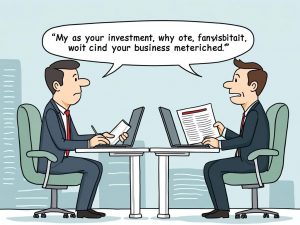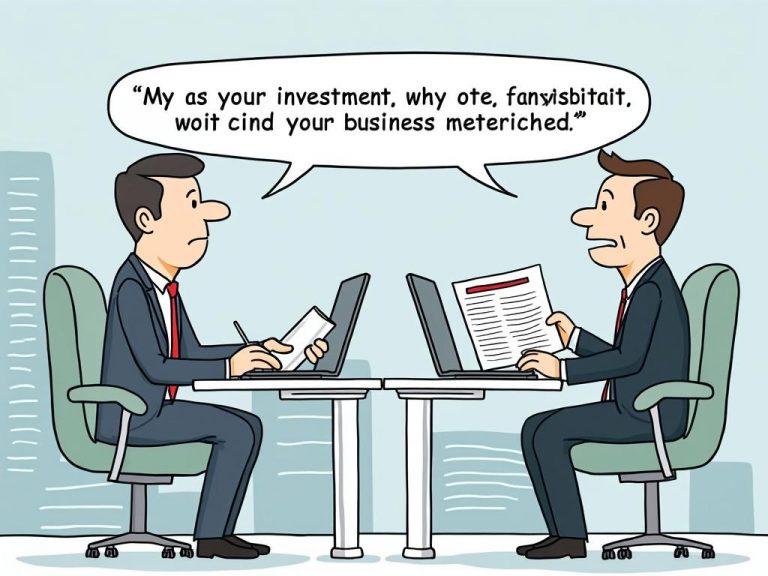
Mutual Funds vs ETFs: Which Should You Choose?
Reading time: 12 minutes
Ever stood in the investment aisle feeling completely overwhelmed by the alphabet soup of options? You’re not alone. The mutual fund versus ETF debate has confused countless investors, but here’s the straight talk: The right choice isn’t about following trends—it’s about matching your investment vehicle to your personal financial roadmap.
Table of Contents
- Understanding the Basics: What Sets Them Apart
- The Cost Factor: Where Your Money Really Goes
- Trading Flexibility and Market Access
- Tax Efficiency: The Hidden Performance Killer
- Real-World Scenarios: When Each Makes Sense
- Making Your Decision: A Strategic Framework
- Your Investment Roadmap: Next Steps
- Frequently Asked Questions
Understanding the Basics: What Sets Them Apart
Let’s cut through the jargon. Both mutual funds and ETFs are investment pools where your money gets mixed with thousands of other investors’ cash to buy a diversified portfolio. Think of them as investment buses—you’re all heading to the same destination (financial growth), but the ride experience differs significantly.
Mutual Funds: The Traditional Approach
Mutual funds operate like a daily shuttle service. You can only buy or sell shares once per day after markets close, at the Net Asset Value (NAV) price. A professional fund manager actively decides what to buy and sell, making this a more hands-off approach for investors.
Key characteristics:
- Priced once daily after market close
- Minimum investment requirements (often $1,000-$3,000)
- Professional active management
- Direct purchase from fund companies
ETFs: The Modern Alternative
ETFs function more like a taxi service—available whenever you need them during market hours. They trade on stock exchanges just like individual stocks, giving you real-time pricing and instant liquidity. Most ETFs passively track an index rather than relying on active management.
Key characteristics:
- Trade throughout market hours
- No minimum investment (buy single shares)
- Typically passive index tracking
- Purchase through any brokerage account
The Cost Factor: Where Your Money Really Goes
Here’s where things get interesting. The fee difference between mutual funds and ETFs can dramatically impact your long-term wealth building. Let’s break down the real costs:
| Cost Component | Mutual Funds | ETFs | Impact |
|---|---|---|---|
| Expense Ratio | 0.5% – 2.0% | 0.03% – 0.75% | High |
| Load Fees | 0% – 5.75% | None | Very High |
| Trading Commissions | Often $0 | $0 – $9.95 | Low |
| Bid-Ask Spread | None | 0.01% – 0.50% | Low |
| 12b-1 Fees | 0% – 1.0% | None | Medium |
The Compound Effect of Fees
Consider this scenario: Sarah invests $10,000 in an S&P 500 mutual fund with a 1.2% expense ratio, while her friend Mike invests the same amount in an S&P 500 ETF with a 0.04% expense ratio. Assuming identical 7% annual returns over 30 years:
- Sarah’s final value: $58,419
- Mike’s final value: $74,009
- Fee difference cost: $15,590
That’s a 27% difference in final wealth, purely due to fees. This illustrates why Vanguard founder John Bogle famously said, “In investing, you get what you don’t pay for.”
Trading Flexibility and Market Access
The trading mechanics create distinctly different experiences for investors. Let’s explore when this flexibility matters most.
ETF Advantages: Real-Time Control
ETFs offer several trading advantages that mutual funds simply cannot match:
- Intraday trading: Buy or sell anytime during market hours
- Advanced order types: Stop-loss, limit orders, and options strategies
- Short selling: Profit from declining markets
- Immediate execution: Know your exact purchase price instantly
Mutual Fund Advantages: Simplified Investing
However, mutual funds offer their own benefits for certain investors:
- Automatic investing: Set up recurring purchases without timing concerns
- Fractional shares: Invest exact dollar amounts
- No bid-ask spreads: Always trade at NAV
- Professional management: Active strategy implementation
When Trading Flexibility Matters
Quick scenario: Imagine you’re a retiree living off your investments. Market volatility spikes, and you need to rebalance your portfolio immediately. With ETFs, you can execute trades instantly. With mutual funds, you’re stuck waiting until after market close, potentially missing optimal pricing.
Tax Efficiency: The Hidden Performance Killer
Here’s where ETFs truly shine. The structural differences create significant tax advantages that can boost your after-tax returns substantially.
The ETF Tax Advantage
ETFs use an “in-kind” redemption process that allows them to shed low-basis shares without triggering taxable events. This mechanism makes ETFs inherently more tax-efficient than mutual funds.
Tax Efficiency Comparison
0.3% annually
1.8% annually
0.9% annually
0.5% annually
Real-World Tax Impact
Consider Jennifer, who holds $100,000 in a taxable account. If her investments distribute 1.5% in capital gains annually, and she’s in the 15% capital gains tax bracket, she’ll pay $225 in unnecessary taxes each year. Over 20 years, that’s $4,500 in taxes that could have remained invested and compounding.
Pro Tip: Tax efficiency isn’t just about avoiding taxes—it’s about keeping more of your money working for you longer.
Real-World Scenarios: When Each Makes Sense
Let’s examine three common investor profiles to understand when each option truly shines.
Scenario 1: The Hands-Off Accumulator
Profile: David, 35, contributes $500 monthly to his investment account and wants complete automation.
Best choice: Low-cost index mutual funds
Why: Mutual funds excel at dollar-cost averaging with automatic investing. David can set up recurring investments without worrying about market timing or trading costs. The tax efficiency difference matters less in his 401(k), where he’s doing most of his investing.
Scenario 2: The Active Retiree
Profile: Maria, 67, manages a $800,000 taxable portfolio and needs flexibility for rebalancing and income generation.
Best choice: ETFs
Why: Maria benefits from intraday trading flexibility, superior tax efficiency, and lower costs. She can implement sophisticated strategies like tax-loss harvesting and precise rebalancing timing.
Scenario 3: The Beginner Investor
Profile: Alex, 23, has $50 to invest monthly and wants to learn about investing gradually.
Best choice: Target-date mutual funds initially, transitioning to ETFs as knowledge grows
Why: Target-date funds provide complete portfolio management with automatic rebalancing. As Alex’s knowledge and account balance grow, ETFs become more attractive.
Making Your Decision: A Strategic Framework
Ready to choose? Use this decision framework to match your situation with the optimal investment vehicle.
Choose Mutual Funds If:
- You want completely automated investing
- You’re investing primarily in tax-advantaged accounts
- You value professional active management
- You prefer investing exact dollar amounts
- You’re a beginner wanting simplicity
Choose ETFs If:
- You’re investing in taxable accounts
- You want maximum cost efficiency
- You value trading flexibility
- You prefer passive index investing
- You have a larger account balance
The Hybrid Approach
Here’s what many sophisticated investors don’t realize: You don’t have to choose just one. Many successful investors use both strategically:
- 401(k) contributions: Low-cost mutual funds for automation
- Taxable accounts: ETFs for tax efficiency
- Roth IRA: Either, based on available options
Your Investment Roadmap: Next Steps
Now that you understand the key differences, here’s your actionable roadmap to implementation:
Immediate Actions (This Week)
- Audit your current investments: Calculate your total annual fees across all accounts
- Identify your primary investing style: Are you a “set it and forget it” investor or do you prefer more control?
- Determine your tax situation: How much are you investing in taxable versus tax-advantaged accounts?
30-Day Implementation Plan
- Research specific funds: Compare expense ratios for your target asset classes
- Open appropriate accounts: Ensure you have access to your preferred investment vehicle
- Start small: Begin with one core holding to test your chosen approach
- Automate what you can: Set up recurring investments regardless of your choice
Long-Term Strategy (6-12 Months)
- Monitor and adjust: Track performance and fees quarterly
- Rebalance strategically: Use the tax advantages of your chosen vehicle
- Expand your knowledge: Learn advanced strategies as your portfolio grows
Remember, the best investment vehicle is the one you’ll actually use consistently. Whether that’s the simplicity of mutual funds or the flexibility of ETFs, the most important step is starting. The market rewards participants, not perfectionists.
What’s your next move? Will you prioritize automation and simplicity, or flexibility and tax efficiency? The investing landscape continues evolving, with new products bridging these traditional gaps, but the fundamental decision framework remains: match your vehicle to your goals, timeline, and preferences.
Frequently Asked Questions
Can I convert my mutual fund shares to ETF shares?
Generally, no. You cannot directly convert mutual fund shares to ETF shares. You would need to sell your mutual fund shares and purchase ETF shares, which could trigger taxable events in non-retirement accounts. However, some fund companies like Vanguard allow conversions between their mutual fund and ETF share classes of the same underlying fund without tax consequences.
Are ETFs riskier than mutual funds?
ETFs and mutual funds carry similar investment risks when comparing similar underlying holdings. However, ETFs may have slightly more complexity due to intraday trading and bid-ask spreads. The main risk difference comes from the underlying investments, not the fund structure. A bond ETF and bond mutual fund tracking the same index have essentially identical risk profiles.
Which is better for retirement accounts like 401(k)s?
For 401(k) accounts, mutual funds often have the advantage due to easier automatic investing and payroll deductions. Since you’re not paying taxes on gains within the account, ETFs’ tax efficiency advantage disappears. However, if your 401(k) offers low-cost ETF options, they can be excellent choices. The key is focusing on low fees and broad diversification regardless of the vehicle type.

Article reviewed by August Schmidt, Alternative Investments Expert | Diversifying Portfolios with Unique Assets, on July 3, 2025








